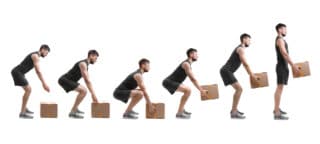
More Complementary & Integrative Healthcare Articles
Contrast Between Hip Joints And Back Joints

There is a big contrast between the joints of the hip and the joints of the back. The main one is range of motion. Especially in the child or athlete, the range of motion in each hip joint is large. By contrast, the range of motion between each vertebra is small. With mobile hips, you can do a split. With mobile vertebrae, you can do a back bend. The hips function more like a solo performer; the vertebrae are team players.
People who grow up in cultures where squatting is the norm maintain ease of motion in the hip joints all their lives. Asians come easily to mind. But, as we Westerners know, those who transition early to chairs, also lose flexibility in the hip joints.
In bending, the hip joints should make the biggest contribution. All advice about lifting heavy objects repeats “bend your knees.” Usually, when the knees bend, the hip joints also bend. So the hips are implied. But, since the bend in the hips takes the bigger part of the task, it would be more accurate to say “bend in the hip joints.” But for some reason, that is not the expression.
A related, more accurate – and colorful – way of speaking, when giving advice on how to pick up a heavy box, is “stick your butt out.” “Sticking out” is a consequence of bending in the hip-joints-and-knees, but to many people the expression and the focus feel impolite. (“Sticking out”, too, needs refinement as one, more accurately, lowers the hips down and back and tucks the tail under.)
Over the years of getting older, the gradual stiffening of the hip joints passes unnoticed. With athleticism, trouble in the knees often shows up. With heavy work or too much sitting, trouble in the low back shows up. It may be that the origin of this trouble is local – exactly bad knees or bad back. But, commonly, the problem is distant – the hip joints have become stuck. The demand for mobility that they usually satisfy has been transferred upward and downward. Those other joints ache because they are taking on tasks for which they were not designed.
In so many circumstances, when you wish to improve comfort and mobility, a good recommendation is to work on enhanced participation of the hip joints in all movements.

















